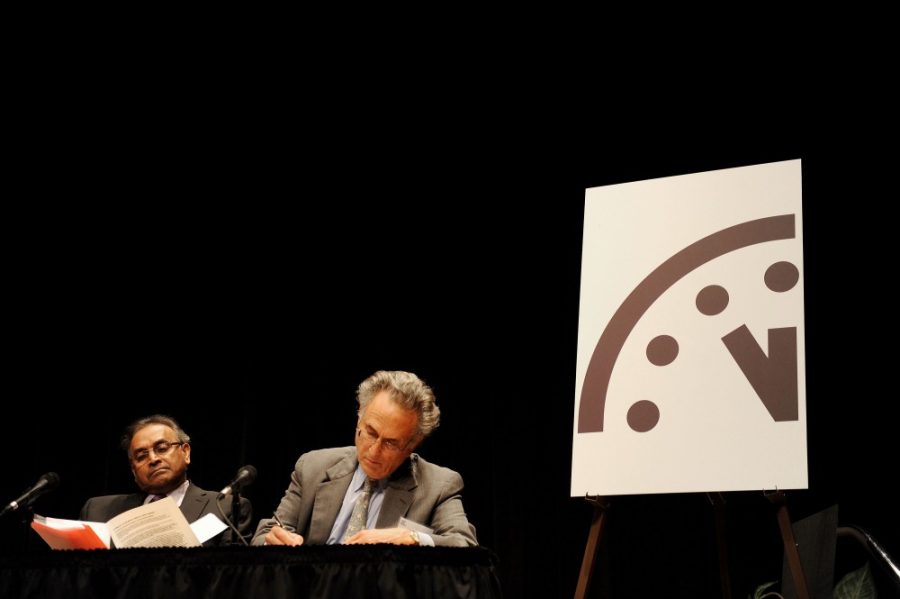Fissure opens up in the AZ desert
A two-mile crack in the ground opened up in Pima County between Casa Grande and Tucson.
Arizona Geological Survey geologist Joseph Cook first saw the fissure on old 2014 Google Earth imagery. When he went out to map it, he realized it had grown much larger. He then employed a drone to map the entire crack.
The fissure now stretches about two miles long, with some spots less than an inch across and other 10 feet across and 30 feet deep.
Cook said water withdrawal for irrigation was probably the cause of the crack, because as groundwater levels drop, the dirt subsides, revealing the empty space once filled with water.
He believes this fissure will grow, as the space left by the groundwater is likely even larger than what has been revealed so far. No structures are in danger, as the fissure is in open desert, and even if it grows, it will not pose any threat to humans, unless someone gets too close and falls in a deep spot.

The fissure now stretches about two miles long, with some spots less than an inch across and other 10 feet across and 30 feet deep.
Cook said water withdrawal for irrigation was probably the cause of the crack, because as groundwater levels drop, the dirt subsides, revealing the empty space once filled with water.
He believes this fissure will grow, as the space left by the groundwater is likely even larger than what has been revealed so far. No structures are in danger, as the fissure is in open desert, and even if it grows, it will not pose any threat to humans, unless someone gets too close and falls in a deep spot.
RELATED: Past UA president Shelton chosen to lead Giant Magellan Telescope Organization
NASA to use satellites to help chimps
NASA and the U.S. Geological Survey’s Landsat satellites will be used to closely monitor deforestation in chimp habitat. Deforestation has been pinpointed as a major threat to chimps. The primates are at risk of further losses, as the International Union for Conservation of Nature estimated there are fewer than 345,000 wild chimps left, when one hundred years ago there were over two million.

NASA officials said satellites can be useful because they show the true complexity of the land—where humans are, where chimps are, where they interact and where the areas at the biggest risk of deforestation are.
Organizations like the Jane Goodall Institute can then use that information to work with local communities to plan for more thoughtful land use and promote conservation.
RELATED: The research behind therapy dogs is limited but real
Manufactured metallic hydrogen
Researchers at Harvard University applied more pressure than exists at the center of the Earth to a sample of hydrogen, creating metallic hydrogen.
The levels of pressure were caused by using diamonds to squeeze solid hydrogen at low temperatures until the atoms were forced to share electrons. This sparked a transition into a metallic state, allowing the hydrogen to conduct electricity.
This substance could be used for supercomputers or to make rocket fuel more powerful. Those possibilities were given first light 80 years ago, when the idea was first suggested in 1935. Scientists thought it would take a pressure of 25 gigapascals (GPa) to spark the transition. That pressure is over 200 times the pressure found at the bottom of the Mariana trench.
Later, scientists predicted that it would take closer to 400 to 500 GPa, and just as they thought, the final pressure needed to make hydrogen metallic was 495 GPa. While this could lead to major breakthroughs in electricity conduction and rocket fuel, more research is needed because right now the scientists who created the metallic hydrogen aren’t even sure if it’s a solid or a liquid.
Doomsday Clock moves closer to midnight
To start, there is a real Doomsday Clock. It’s updated by the Bulletin of the Atomic Scientists, who created the clock in 1947 when the danger of nuclear war and a total annihilation of the planet was on the forefront of everyone’s minds. Now, they adjust the hand of the clock closer to or farther from midnight, depending on where they see humanity as heading.
Midnight, of course, represents the end of humanity—Doomsday.
The hand started at seven minutes from midnight in 1947. 1949 was the first time the hand was moved, to three minutes from midnight after the Soviet Union tested its first successful atomic bomb.
This year, the hand has been moved to two and a half minutes from midnight, 30 seconds closer to midnight than last year. This is the closest the Doomsday Clock has been to midnight since 1953, after both the U.S. and the Soviet Union tested hydrogen bombs.
Factors that led to this decision were North Korea’s nuclear weapons development, how President Donald Trump will handle the Iran nuclear deal, Trump’s denial of climate change, climate change in general and Trump’s intentions to expand the American nuclear arsenal.
Follow Marissa Heffernan on Twitter.









